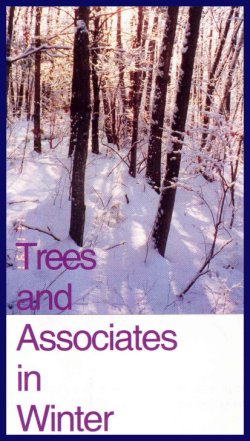

Mycorrhizae and root hairs are abundant and active in winter. Our tree concept must be expanded to include these facts.
By Dr. Alex L. Shigo
Problem
Solution
This article discusses results of
observations on belowground parts of trees in winter from 1992 to present, in
New Hampshire, United States. Some philosophy is given as a plea for Modem
Arboriculture. An expanded concept of a tree is given. Trees are
viewed as opportunistic multiple systems. Abiotic and biotic factors are
discussed as initiators of processes.
Dormancy
Trees as business conglomerates
Trees are often referred to as living systems. Many of the problems with understanding phenological stages could be clarified if a tree was viewed not as a single system, but rather as a cluster of systems connected in highly ordered ways. Maybe a tree is more like a business conglomerate. If the business conglomerate analogy could be accepted, then many different parts of a tree could be in different phenological stages at the same time. Many aboveground stages are different from those belowground. In the sense of natural dualities, the business conglomerate analogy is a better way to view a tree.
Physiology
If a tree is a cluster of systems, and all systems require a continuous supply of energy to maintain order, then it appears that the different systems would require energy that came from storage. It is difficult to accept that energy from photosynthesis could supply all systems at the same time. Some timing or allocations for timing must be there, and also, a supply of energy in a stored state.
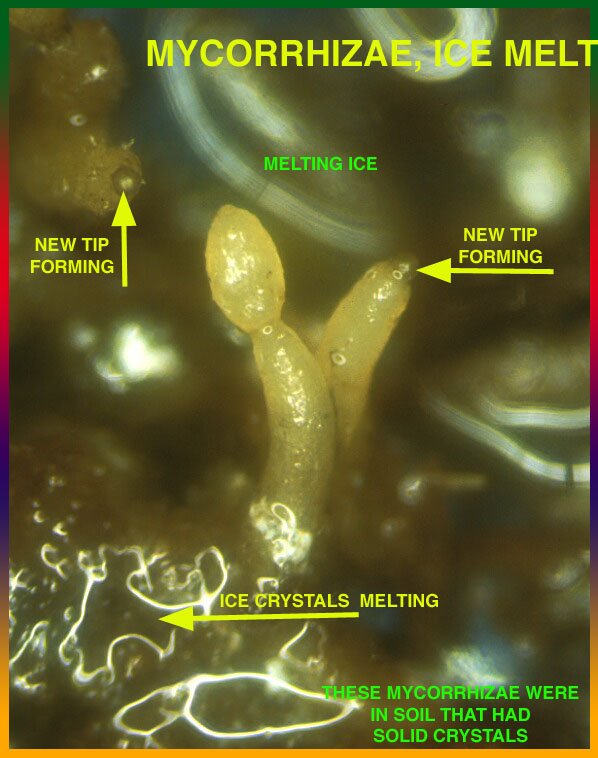 This we know is true because trees first form ATP, which is used to form glucose
which then forms cellulose, starch and a great number of other substances.
Still, glucose is the fuel that makes it possible for the tree to survive.
Trees do have ways of storing energy reserves and for regulating the use of the
energy for processes to survive.
This we know is true because trees first form ATP, which is used to form glucose
which then forms cellulose, starch and a great number of other substances.
Still, glucose is the fuel that makes it possible for the tree to survive.
Trees do have ways of storing energy reserves and for regulating the use of the
energy for processes to survive.

Energy flow
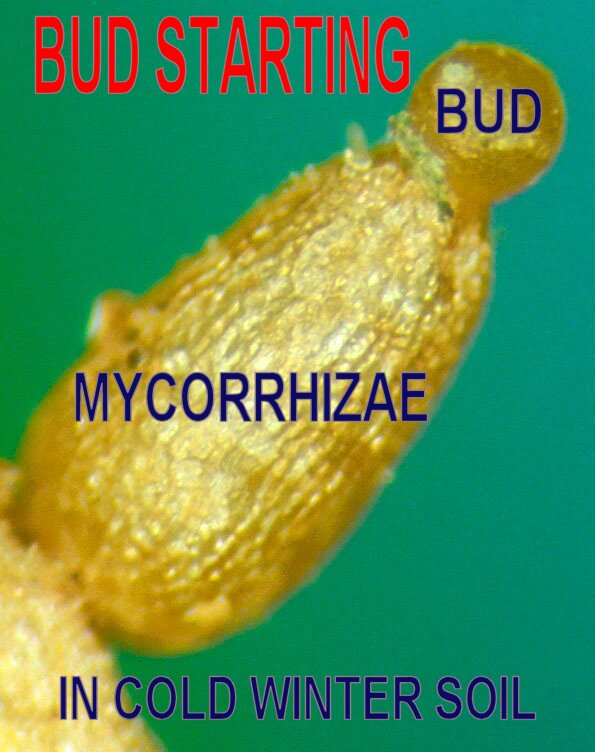 But if ice does not form, then dehydration may not occur. When temperatures decrease below 0 degrees Celsius, and the water
is pure and quiet, ice may not form. This is called supercooling of water.
When nucleators are present, the ice will form as crystals about each one.
But if ice does not form, then dehydration may not occur. When temperatures decrease below 0 degrees Celsius, and the water
is pure and quiet, ice may not form. This is called supercooling of water.
When nucleators are present, the ice will form as crystals about each one.
It seems that if energy and water are stored, and that elements are also essential for life, then there must be some way the tree stores elements. It is difficult to conceive that growth and other element-requiring processes receive elements at the time they are required. There must be a storage process for elements.
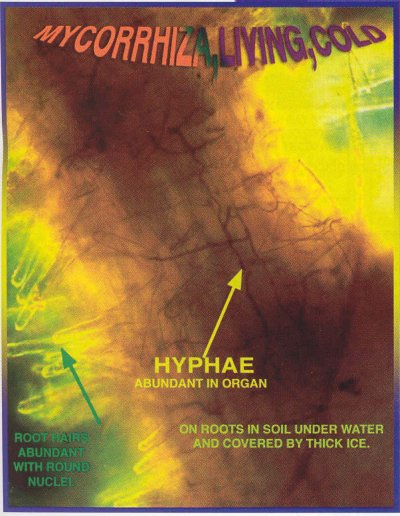 Elements
in molecules often precipitate when pH increases. This we know for iron,
manganese and other elements. We know also that some elements such as
potassium can be bonded in many chelated-like forms. Potassium is an element
that is absorbed in its pure form. When potassium is in high
concentrations, the electrical resistivity (as measured by a Shigometer) of the
wood is very low. In summer during the growing season, electrical
resistivity in k-Ohms is low. As winter approaches, the electrical
measurements increase greatly. Summer could be in the 8 k-Ohm or 10 k- Ohm
range while winter could be in the range of a hundred, or even higher. If
potassium is a factor in electrical resistivity, then it must be bonded in ways
that prevent its action as an electrolyte.
Elements
in molecules often precipitate when pH increases. This we know for iron,
manganese and other elements. We know also that some elements such as
potassium can be bonded in many chelated-like forms. Potassium is an element
that is absorbed in its pure form. When potassium is in high
concentrations, the electrical resistivity (as measured by a Shigometer) of the
wood is very low. In summer during the growing season, electrical
resistivity in k-Ohms is low. As winter approaches, the electrical
measurements increase greatly. Summer could be in the 8 k-Ohm or 10 k- Ohm
range while winter could be in the range of a hundred, or even higher. If
potassium is a factor in electrical resistivity, then it must be bonded in ways
that prevent its action as an electrolyte. Photos in books
Results showed many active mycorrhizae and root hairs in soil under cold water covered by ice. Ectomycorrhizae and endomycorrhizae from cold soil are shown in color in my book, Tree Anatomy. On the cover of another book, 100 Tree Myths, I have a color photo of ectomycorrhizae and root hairs from a Pinus strobus. There are other color photos of mycorrhizae from cold winter soil in Tree Pithy Points. (The link to the books)
Life in cold soil
The mycorrhizae are not only in nonfrozen soil under frozen soil, but from soil under water that was covered by ice. Further, many of the mycorrhizae and root hairs at 1,OOOX with a phase microscope showed abundance of hyphae inside the non-woody roots. The nucleus in a root hair is at the tip of the cell. Nuclei in all shapes were viewed. Active nuclei are round and as they age and die, they become spindle-shaped.
Survival
Trees are clusters of highly ordered systems; a conglomerate. Each system requires time, optimum conditions, and a ready supply of energy, water and elements. Each process takes time. In temperate climates there is just not enough time during warm periods to have every process of every system conduct its activeties.
Absorption
Mycorrhizae are organs made up of fungus and tree tissues. The organs facilitate the absorption of water and elements essential for healthy growth. Trees have many redundancies, some for short-term conditions and some for long-term conditions. Root hairs are finger-like extensions of single epidermal cells that contain very little lignin in their walls. The cell walls of the epidermis do have cellulose, which is not the best of boundaries or membranes for absorption of water and elements. Root hairs are usually ephemeral. They grow as new roots grow and they go or die as woody roots begin to form a bark that contains suberin. Their numbers are usually so great that even if they are poor absorbing structures, they still absorb some water and elements.
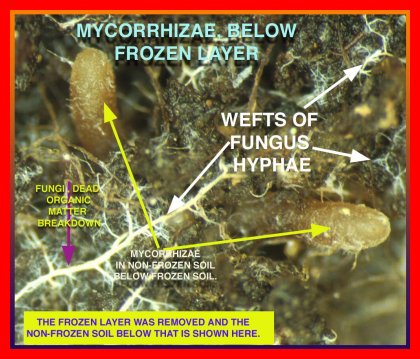 Membranes
Membranes
Membranes are nature's
discriminators. Membranes keep things in that should stay in and keep
things out that should stay out. When membranes lose their ability to discriminate,
the cell will die. When many cells die, the organism will die.
Membranes and bonds are extremely important. Bonds hold
matter in place and the bonded matter is further kept in place by some membrane.
The basic unit of life - the cells - speaks to this point.
Plant cells have vacuoles and turgor pressure. Animal
cells have neither. Plant cells have a continuous symplast made possible by
plasmodesmata. Animal cells have another means for intercellular
communication called channels.
Root hairs have cellulose as the major substance in their
outer membrane. Fungi have chitin, which contains nitrogen, in their outer
membrane. Chitin must have unique characteristics for absorption.
Fungi have hyphae that grow through a substrate. Energy-yielding
substances, water, essential elements, and vitamins must be absorbed through the
chitin-rich membrane of the hyphae.
The connection of fungi with trees optimizes two absorbing
systems - cellulose in root hairs, and chitin-rich substances in hyphae.
Mycorrhizae with root hairs have both systems.

What determines what stays in and what comes in? And what drives this process of absorption? No system can start itself.
Connections
Nitrogen is essential for growth. What pathway operates for entrance of nitrogen through a membrane into tree roots? And, how does all of this relate to mycorrhizae being abundant in cold winter soil? Here are some additional thoughts based on points of chemistry and results of observations that repeated.
Chemistry behind absorption of nitrogen
Compounds of carbon, oxygen, hydrogen, nitrogen, sulfur and phosphorus make up about 98 percent of the mass of trees. Carbon, oxygen and hydrogen come from water and carbon dioxide; but where do the others come from and how do they get in?
 Clusters
of ice crystals form in minute cavities. Soil does not freeze, but the
water in soil freezes.
Clusters
of ice crystals form in minute cavities. Soil does not freeze, but the
water in soil freezes.

The ice melted when I placed this sample under the microscope. The sample came from soil that had ice crystals in the cavities. The soil came from my back yard in January. The soil surface was covered with snow. I believe that mycorrhizae and many other organisms do not freeze, but supercool.
Philosophy
"Always" is what I believe in. Where does a circle start? I believe that philosophy is a mental trip around a circle. Always.
“An author,
lecturer and consultant, Dr. Shigo started
Shigo and Trees, Associates
twenty
years ago after retirement from the U.S. Forest Service.”
Reproduced with permission of Tree Care Industry and Dr. Alex L. Shigo.
The article was published in Volume XIII, Number 12-December 2002 of TCI.
This site is dedicated to the remembrance of Robert Felix who for many years
worked very hard for the improvement of the tree care industry: 1934-1996.
The images for this article were taken from a new CD set that features more than 5,000 items taken from Shigo's research and travels worldwide
over a 40-year period. The CD set has more than 100 chapters with
more than 5,000 color photos.
To order contact
Shigo and Trees, Associates LLC.
Dictionary MAIN
PAGE
Text & Graphics Copyright © 2009
Keslick & Son Modern Arboriculture
Please report web site problems, comments and words of interest,
not found.
Contact